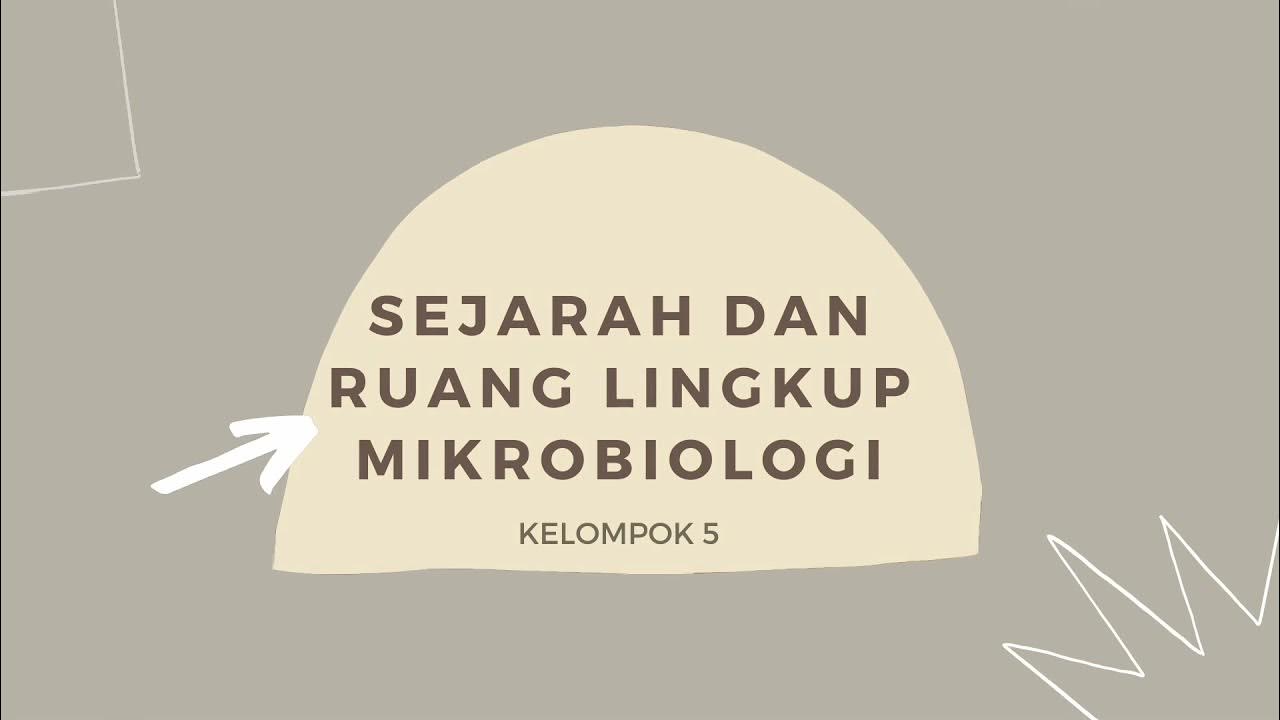Sejarah dan Perkembangan Mikrobiologi
Summary
TLDRThe lecture introduces microbiology, explaining the history and significance of microorganisms. It covers the types of microbes, including bacteria, viruses, fungi, and protozoa, and their various roles in human life, such as in fermentation, nitrogen cycles, and disease prevention. The development of microbiology, from the discovery of the microscope to breakthroughs like antibiotic and vaccine research, is highlighted. The lecture emphasizes the importance of microbiology in fields like healthcare, agriculture, and industry, showcasing its impact on human health, bioremediation, and the production of essential substances like insulin.
Takeaways
- 😀 Microorganisms are tiny organisms that cannot be seen by the naked eye and can only be observed under a microscope.
- 😀 Microorganisms are divided into prokaryotes (bacteria and archaea) and eukaryotes (algae, fungi, protozoa, etc.).
- 😀 Microorganisms play a significant role in various processes such as fermentation and the nitrogen cycle.
- 😀 Microbiology as a discipline began with the invention of the microscope, which allowed the observation of microorganisms.
- 😀 Microorganisms are used in medicine to develop antibiotics, antiviral agents, and antifungals.
- 😀 Different branches of microbiology include bacteriology, mycology, virology, and parasitology, focusing on specific types of microorganisms.
- 😀 The history of microbiology dates back to ancient times with Aristotle's theory of spontaneous generation and the later rejection of this idea by proponents of biogenesis.
- 😀 Key experiments by John Needham, Lazzaro Spallanzani, and Louis Pasteur helped debunk the theory of spontaneous generation.
- 😀 Key historical developments include the discovery of the Gram staining method, the invention of the Petri dish, and the identification of viruses as disease-causing agents.
- 😀 Microorganisms have numerous applications in various fields, including environmental science (bioremediation), health (disease treatment), agriculture (plant protection), and industry (fermentation processes).
Q & A
What is microbiology?
-Microbiology is the scientific study of microorganisms, which are organisms that are too small to be seen with the naked eye and can only be observed under a microscope.
What are the main categories of microorganisms?
-Microorganisms are broadly categorized into prokaryotes (such as bacteria and archaea) and eukaryotes (such as algae, fungi, and protozoa). Additionally, there are acellular organisms like viruses.
Why is microbiology important to human health?
-Microbiology is crucial for understanding the role microorganisms play in human health, including their contributions to diseases, the development of antibiotics, vaccines, and treatments for various infections.
How did the discovery of the microscope impact microbiology?
-The invention of the microscope allowed scientists to observe microorganisms that were previously invisible to the naked eye, leading to significant discoveries in microbiology, such as the identification of various pathogens and the development of methods to isolate and culture microorganisms.
What is the difference between prokaryotes and eukaryotes?
-Prokaryotes, such as bacteria and archaea, are simpler organisms without a nucleus. Eukaryotes, such as fungi, algae, and protozoa, have more complex cell structures with a defined nucleus and organelles.
What are some practical applications of microbiology in various industries?
-Microbiology has numerous applications across different sectors including health (antibiotics and vaccines), agriculture (pest control and soil health), environment (bioremediation), and industry (fermentation for food and chemicals).
What role do microorganisms play in the nitrogen cycle?
-Microorganisms are essential for the nitrogen cycle as they help convert atmospheric nitrogen into forms that plants can use and also assist in the breakdown of organic matter, recycling nitrogen back into the environment.
What was the significance of Louis Pasteur's experiments with the swan-neck flask?
-Louis Pasteur's swan-neck flask experiment demonstrated that microorganisms do not arise spontaneously but are carried in the air. His work provided crucial evidence against the theory of spontaneous generation.
How did Robert Koch contribute to microbiology?
-Robert Koch is known for his postulates, which provided a systematic method for identifying specific microorganisms as the cause of specific diseases. This laid the foundation for the germ theory of disease.
What is bioremediation and how does it involve microorganisms?
-Bioremediation is the process of using microorganisms to break down harmful pollutants and contaminants into less harmful substances, thus helping to clean up environmental pollutants like oil spills and industrial waste.
Outlines

هذا القسم متوفر فقط للمشتركين. يرجى الترقية للوصول إلى هذه الميزة.
قم بالترقية الآنMindmap

هذا القسم متوفر فقط للمشتركين. يرجى الترقية للوصول إلى هذه الميزة.
قم بالترقية الآنKeywords

هذا القسم متوفر فقط للمشتركين. يرجى الترقية للوصول إلى هذه الميزة.
قم بالترقية الآنHighlights

هذا القسم متوفر فقط للمشتركين. يرجى الترقية للوصول إلى هذه الميزة.
قم بالترقية الآنTranscripts

هذا القسم متوفر فقط للمشتركين. يرجى الترقية للوصول إلى هذه الميزة.
قم بالترقية الآنتصفح المزيد من مقاطع الفيديو ذات الصلة

Pengenalan Mikrobiologi Industri

Sejarah MikroBiologi | Bagian Pertama | RPS Tatap Maya 🔬 ⚗️ #mikrobiologi

Microbiology || Introduction & History || Scope & its importance || L-1||Unit-1|| B.pharma 3rd sem

Introdução à MICROBIOLOGIA | Videoaula | Flavonoide #1

Introduction to Microbiology |

Ruang Lingkup dan Sejarah Mikrobiologi
5.0 / 5 (0 votes)
